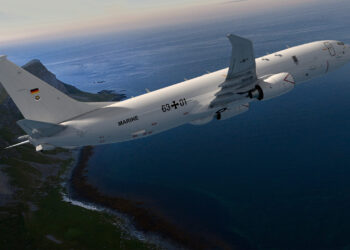Agence France-Presse, China must be more transparent about its military intentions and naval buildup in the Asia-Pacific to ease strategic concerns, U.S. Navy Secretary Donald Winter said Aug. 15 during a visit to Australia.
“We continue to take a look at China and try to understand what the Chinese intent is,” Winter told reporters in Canberra.
“The level of transparency comes up all the time, and we’re trying to understand not only what it is that they’re doing, but why they are doing it.”
China and the U.S. have long sparred over the nature of China’s military development, with Washington saying it is trying to project its growing power and Beijing maintaining its armed forces are geared for self-defense only.
In March, China said it would boost defense spending by 17.8 percent to about $45 billion this year, but a Pentagon report said in May that Beijing’s total military-related spending could more than double that.
China’s navy is rapidly modernizing and transforming from a coastal force into a blue-water naval power with more than 20 new amphibious assault ships and nuclear-powered attack submarines.
A new type of nuclear-powered ballistic missile submarine equipped with sea-launched intercontinental ballistic missiles is currently undergoing sea trials.
Australia, a close U.S. ally, has regularly distanced itself from American concerns that China’s military and economic rise was likely to stir regional conflict. But a recent Australian defense paper said China’s buildup could create instability.
Two Chinese naval ships are to visit Sydney in September to hold a joint rescue exercise with Australia and New Zealand to boost military coperation.
Winter said a new theater defense missile under development by the U.S. and Japan, which could be deployed on a new fleet of Australian navy destroyers, would boost regional stability.
“It is a defensive system, it is a defensive concept. Hopefully it represents a stabilizing construct,” he said.









